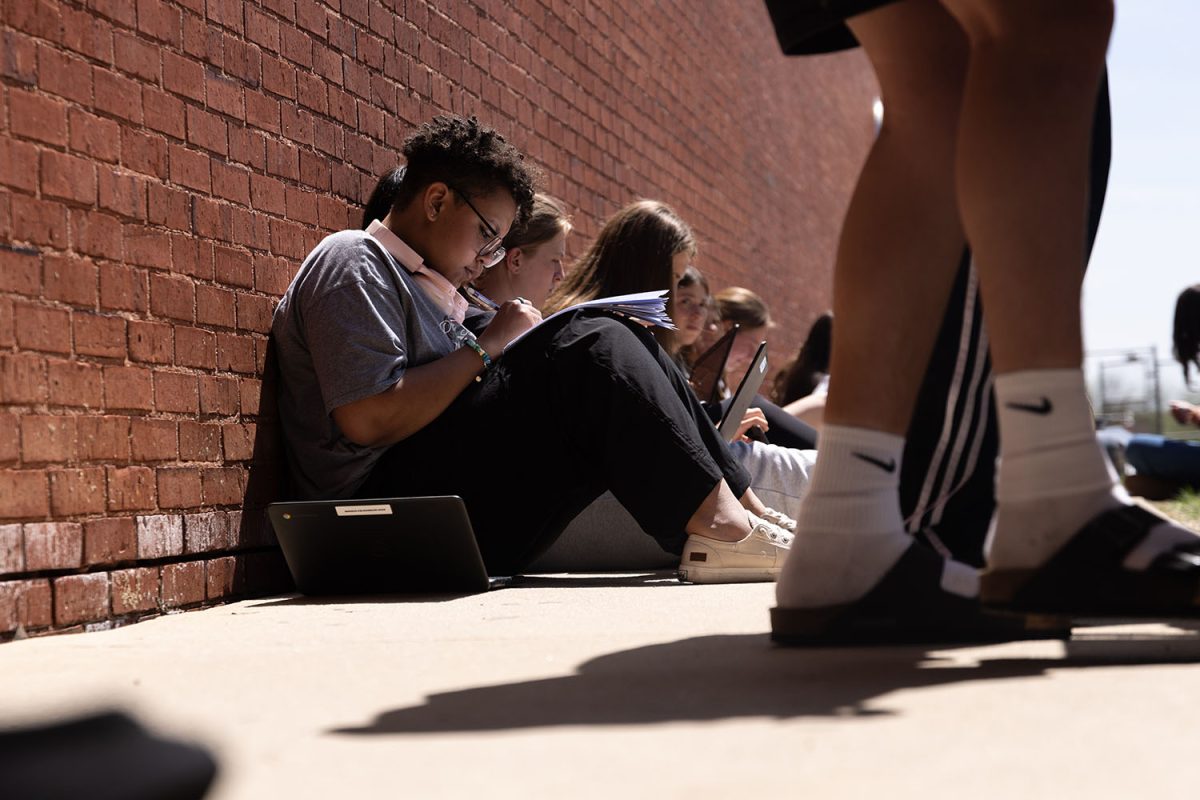Picture this: It’s 75 degrees, UV seven, the sun is shining, and flowers bloom—but you’re stuck inside a sultry classroom during fourth block.
This is the reality for students almost daily. While outside learning seems valuable, teachers have limited teaching time, strict deadlines, and classroom technology to use, so they keep their classes inside. There is a strong misconception that the great outdoors is too distracting for students when the opposite could actually be true.
Our school is surrounded by a lot of green space, from the grassy hills by the baseball fields to the wooded area near the pond. According to an article by Kirsten Weir for the American Psychological Association, this green space itself has been proven to support student mental health. She explains the results of a University of Chicago study.
“Green spaces near schools promote cognitive development in children and green views near children’s homes promote self-control behaviors…being exposed to natural environments improves working memory, cognitive flexibility, and attentional control,” Weir wrote.
Our school certainly has no limit on outdoor working space. From benches to fields to outdoor lunch tables and even a pond onsite, there are plenty of locations for students to focus on schoolwork while getting their dosage of vitamin D. So, why aren’t these spaces being put to use more?
Sophomore English teacher Mrs. Katelyn Scaffidi understands that several factors affect the possibility of outdoor learning.
“A lot of times we assume students would benefit from working at a desk…also because of safety concerns [outside],” Scaffidi said.
However, this is not always the case. Students work at a stationary desk for more than six hours every day, which gets tedious after a while. This is likely detrimental to student performance, which is why teachers incorporate group work and movement into their lesson plans. The same concept of getting out of desks should be applied to working outside for a change of scenery.
Besides, there are countless advantages to being in the great outdoors, which sophomore Laila Roe notes.
“When I work outside, it’s always nicer; there’s more space, and it feels more calming than when I’m inside a classroom,” Roe said.
According to the University of California Davis Health, going outside during the school day even has long-term health benefits.
“Studies also show that being in nature has a positive effect on our bodies by reducing cortisol levels, muscle tension, and demands on our cardiovascular systems (lowers heart rate and blood pressure). Being out in nature often may lead to lower rates of heart disease,” the site states.
These benefits of outdoor learning significantly outweigh any concerns. If being outside helps student performance, then this is something that should be taken seriously and prioritized. Perhaps requiring outdoor learning on a biweekly basis or creating more outdoor learning spaces, like outside of the trailers, could benefit students.
“Outside, [students] have more energy…they’re more likely to participate,” Scaffidi said.
Each opinion represented in The Panther Press is the view and voice of the writer. Opinions, as the selection and curation of content by the editors, do not represent the views of the entire Panther Press staff, the adviser, the school, or the administration.














